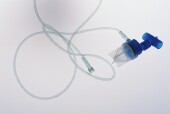RAND/UCLA Appropriateness Method used to rate scenarios related to PICC use
THURSDAY, Sept. 17, 2015 (HealthDay News) — An expert panel has developed the Michigan Appropriateness Guide for Intravenous Catheters (MAGIC), according to research published in the Sept. 15 issue of the Annals of Internal Medicine.
Vineet Chopra, M.D., of the University of Michigan in Ann Arbor, and colleagues convened an expert panel that applied the RAND/UCLA Appropriateness Method to define criteria for the insertion, maintenance, and care of peripherally inserted central catheters (PICCs). After systematic reviews of the literature, scenarios were developed, and the appropriateness of PICC use was compared with that of other venous access devices.
The researchers found that 253 of 665 scenarios (38 percent) were rated as appropriate, 124 (19 percent) as neutral/uncertain, and 288 (43 percent) as inappropriate. For peripherally compatible infusions, when the proposed duration of use was five or fewer days, use of PICCs was rated as inappropriate. For use between six and 14 days, midline and ultrasonography-guided peripheral intravenous catheters were preferred to PICCs. In critically ill patients, when 14 or fewer days of use were likely, nontunneled central venous catheters were preferred over PICCs. In patients with cancer, for irritant or vesicant infusion, regardless of duration, PICCs were rated as appropriate.
“Although a key first step, these criteria offer but a blueprint of best practices,” the authors write. “To make MAGIC truly happen, diffusion, uptake, and refinement from the providers and stakeholders engaged in vascular access is necessary.”
Several authors report financial ties to the biomedical industry.
Copyright © 2015 HealthDay. All rights reserved.








